A dwindling population, dilution of tradition, and diminishing national presence have fuelled urgency within the Kodava community in Bengaluru and the neighbouring Kodagu region.
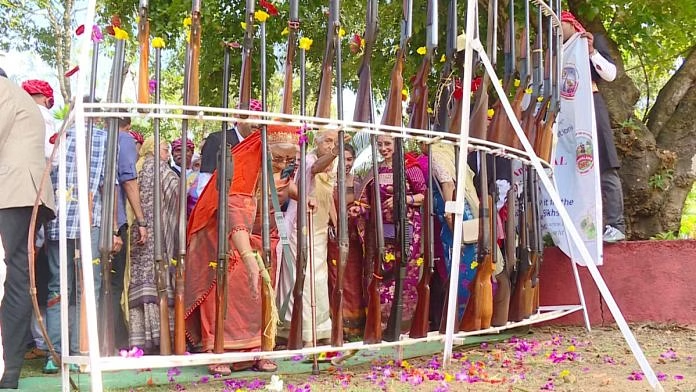
At the Thok Namme (Gun Carnival), organised by the Codava National Council, a Kodava group fighting for recognition of its unique identity and homeland | Photo: By special arrangement
Bengaluru:
The lunch was a celebration of Kodava pride, heritage, and culture. Two batches of guests at The House of Kodavas in Bengaluru savoured shredded pork on akki-totti (rice rotis), mutton mince-filled ghee rice, and a vast menu of traditional Kodava cuisine like otti-pandi curry and beimbale (bamboo shoot), each given a contemporary twist. Even the table mats served as a dossier of sorts, detailing aspects of Kodava culture.
The Bengaluru restaurant is an initiative to “keep the [Kodava] clan together”. A dwindling population, dilution of tradition, and diminishing national presence have fuelled urgency within the Kodava community in Bengaluru and the neighbouring Kodagu region. Initiatives like the House of Kodavas seek to create a community-focused social and business network akin to those of the Parsis or Jains.
“We Kodava say that we are a clan of warriors and need to support each other. But I would definitely say we are lacking in this,” said entrepreneur Kallichanda Revathi, 43, who helped conceptualise The House of Kodavas initiative.
From community organisations to social media, Kodavas are using various platforms to infuse a sense of togetherness and align it with economic interests. The annual gun festival, field hockey tournament, and return to the Kodava script Lipi are all part of a concerted attempt to revive Kodava identity and raise awareness about the “existential crisis” facing this endangered ethnolinguistic minority group from southern Karnataka.
“Serving Kodava cuisine like a normal restaurant will make no difference to our business. This is about serving the same dish differently to help us get noticed. This will help Kodava entrepreneurs,” said Kalengada Bopanna who runs Umbak Entha, a cloud kitchen, and one of four entrepreneurs who organised the lunch.
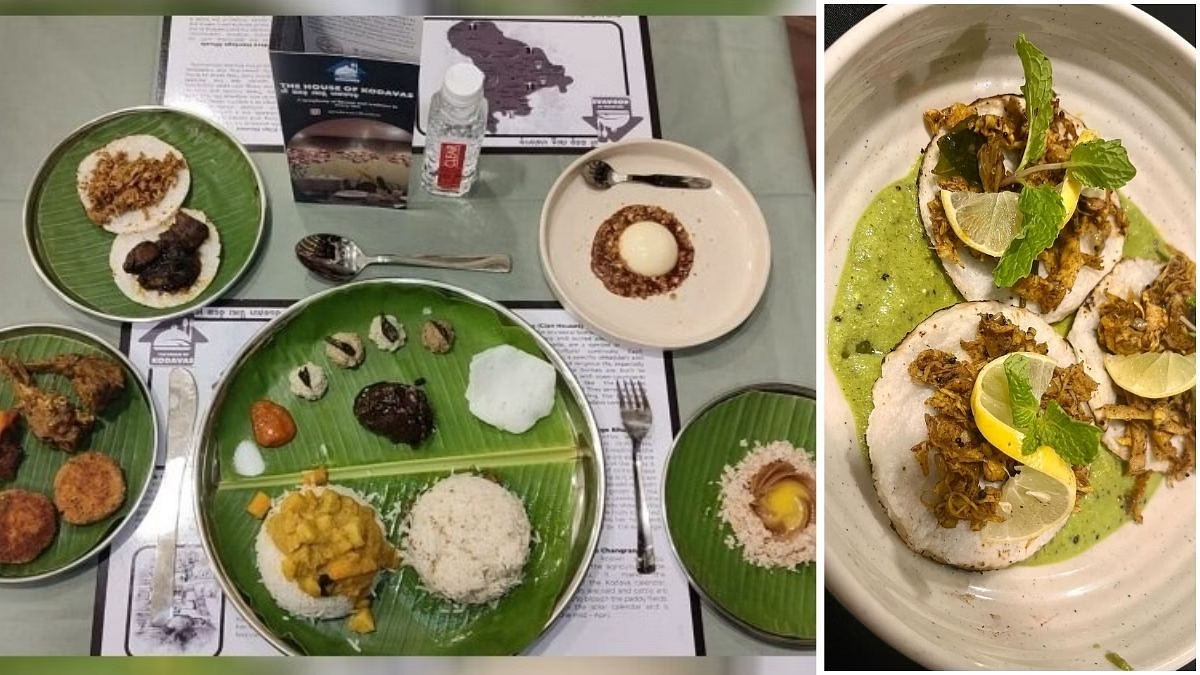
Photo: @thehouseofkodavas | Instagram
But the enthusiasm attached to flaunting one’s Kodava lineage has not translated into practice, said elders of the community like N U Nachappa, the president of the Codava National Council, a group fighting for recognition of its unique identity and homeland. Over the years, Nachappa has made representations to every high office in the country as well as the United Nations to secure due recognition and protection for the Kodava community.
“Kodavas are literate but not educated. Our problem is that we have no political instinct. There is no assertion of our cause. And this allows everyone to take us for a ride,” he said.
‘Festival of guns’
Around 50 people gathered in an open field at a private resort in Ballamberi village on Wednesday morning to celebrate the 14th annual ‘Thok Namme’ (gun festival). The women wore the full Kodava saree style and attire, and most men sported long handlebar moustaches, looking regal. The event began with an offering of prayers to guns, followed by shooting competitions for men, women, and children.
Kodavas have the freedom to possess weapons, a right dating back to the 1830s when the British exempted them from the Indian Arms Act for their contribution to the fight against Tipu Sultan. Though not part of any traditional festival, the CNC created the event to instill Kodava pride, revive ancient customary practices, and keep the movement active and thriving.
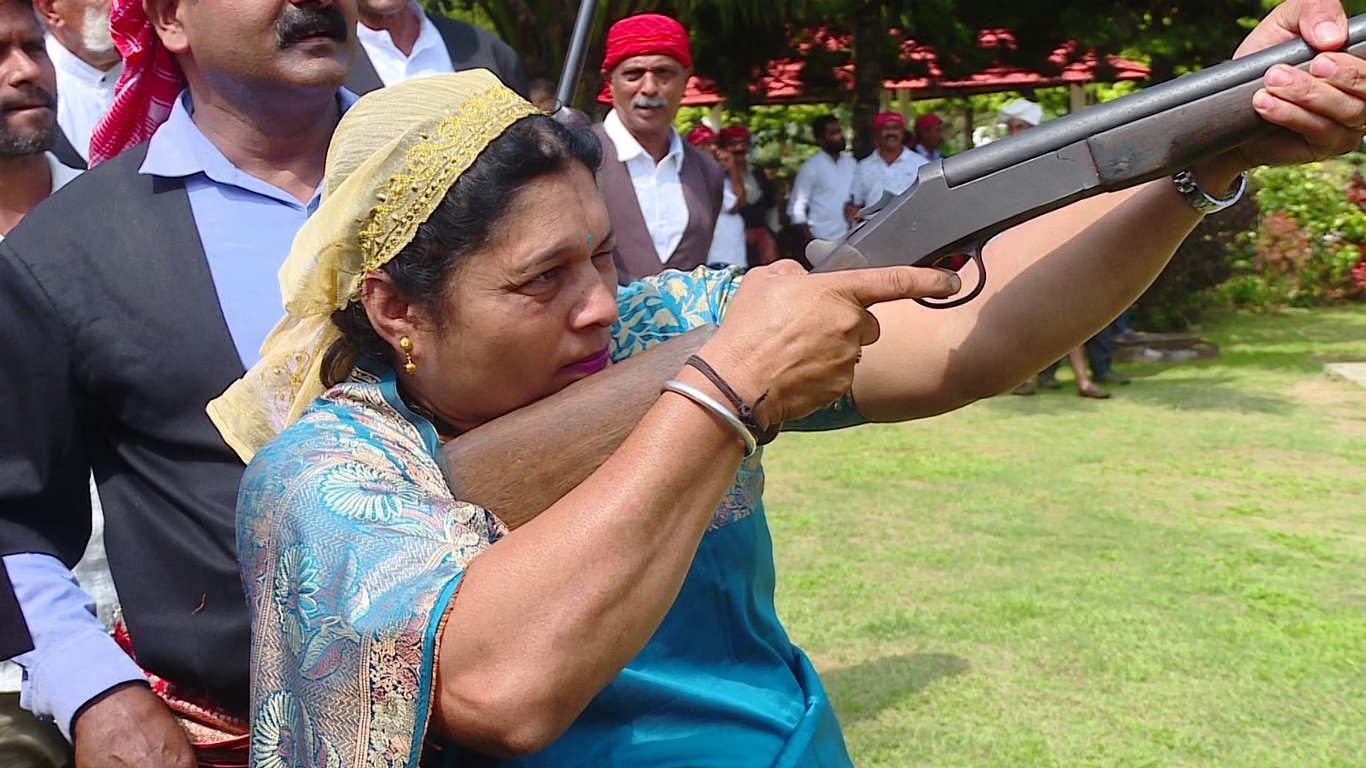
A Kodava woman at the Thok Namme (Gun Carnival) | Photo: By special arrangement
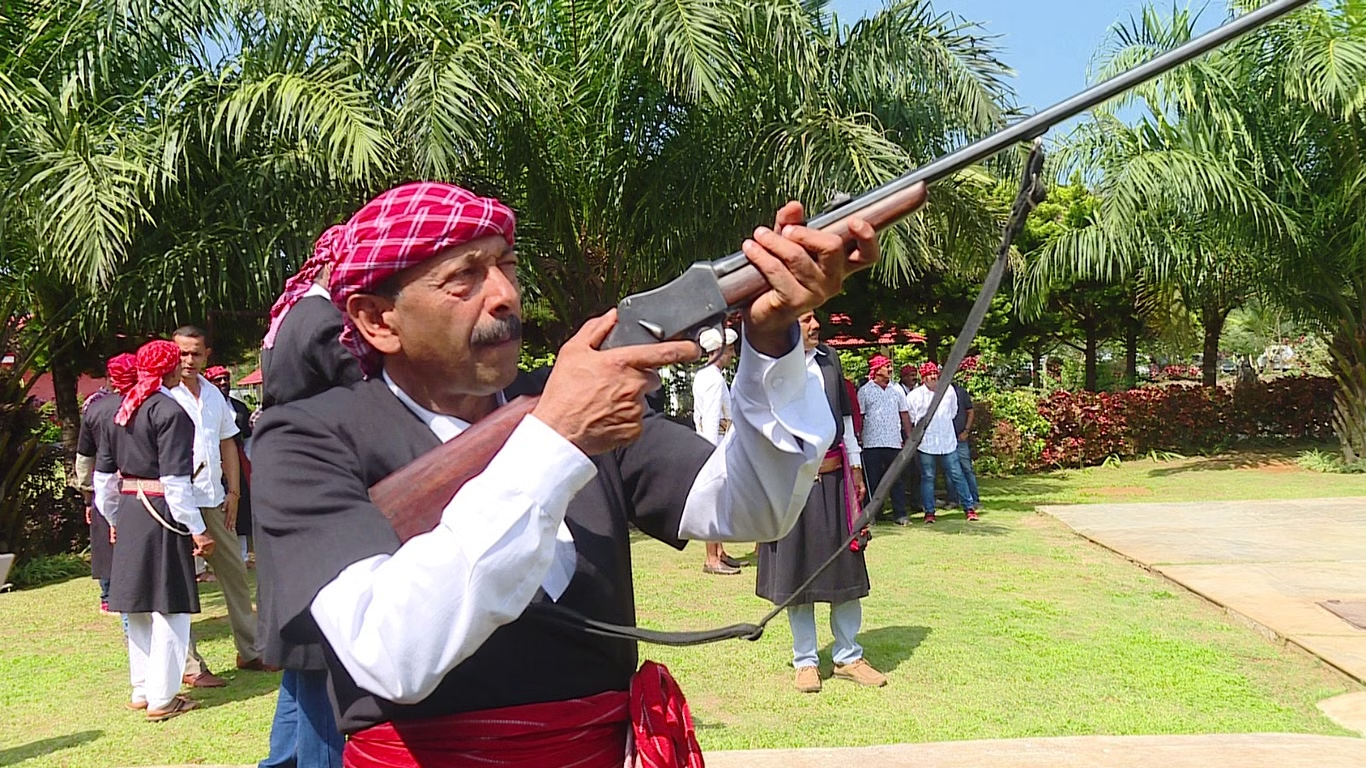
Photo: By special arrangement
Kodavas have made a name for themselves in sports, especially hockey, and for their service to the army. Field Marshal KM Cariappa and General KS Thimayya, along with athletes like Ashwini Ponnappa, have become icons not only in their respective fields but also as symbols of Kodava pride and resilience.
Unlike several other micro-groups that do not enjoy the same social capital, the Kodavas have evolved as one of the more successful and progressive communities. Their customs are distinct from other communities anywhere in the country. However, scholars and historians say that distinctiveness is eroding.
“The bigger threat to Kodava’s way of life is from within India, with more people adopting Hindu and brahminical practices,” said professor CC Sowmya Dechamma from the Centre for Comparative Literature at the University of Hyderabad.
During colonial rule, Kodavas were enumerated as a separate race until the 1941 census when they were merged under the Hindu religion.
Traditional Kodava marriages, for instance, do not have priests conducting rituals. It is the duty of the elders to conduct the ceremonies.
“We are nature and ancestor worshippers. But now, we are conducting Homas (sacred pyre) where Brahmin priests ask us to throw rice we grow into the fire. This is absurd,” said a Kodagu-based author and academic, who did not want to be named.
People who spoke to ThePrint added that this religious appropriation has also turned Kodava into a bastion of right-wing ideologies.
“This merging of [our] unique identity with that of mainstream Hindus has led to blind support [for] political parties that subscribe to such beliefs,” said Nachappa. He added that there is no incentive for political parties to take their demands seriously.
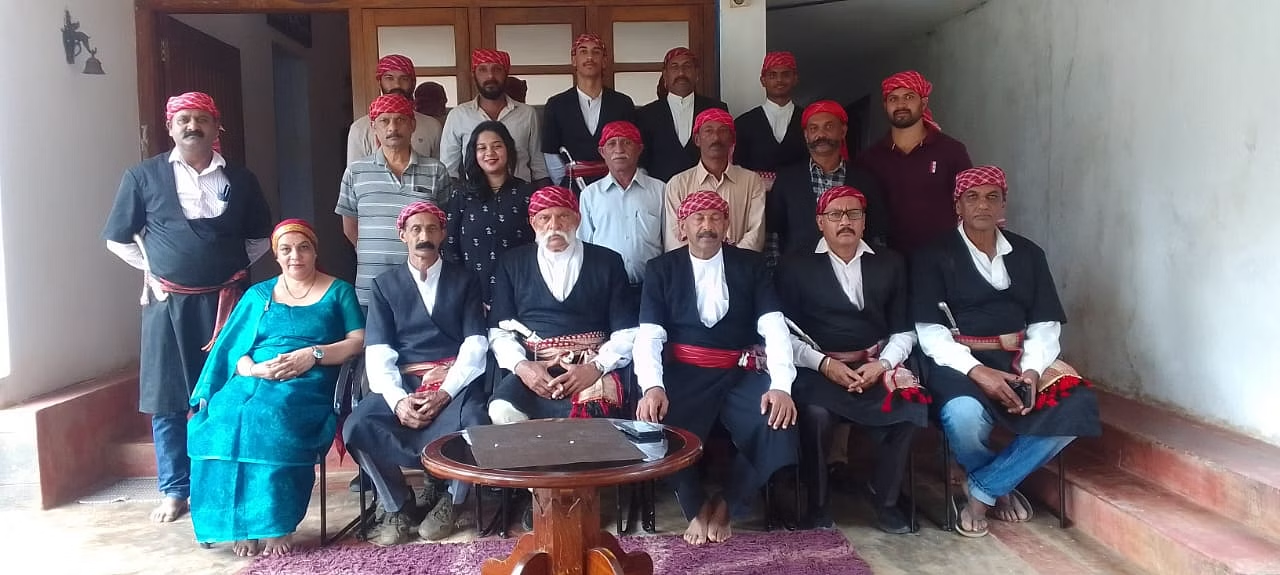
Members of the Kodava community in Karnataka | Photo: By special arrangement
‘Separate race’
Nachappa and the CNC have been fighting for the Kodavas to be granted Scheduled Tribe (ST) status. A section of community members cite the declining population as justification for this measure. The 2011 census indicates that the number of Kodavas decreased from around 1.5 lakh to around 1.25 lakh. According to Nachappa, the numbers are inflated.
Coorg, as it was formerly called, was a state for six years between 1950 and 1956 but was later absorbed into Karnataka, merging its identity. This continues to rankle community members, who are now seeking new ways to establish a separate identity.
Efforts to preserve Kodava distinctiveness include popularising the Kodava script, ‘Lipi’. Though not officially recognised by the Karnataka government, a growing number of Kodavas have started using it on signboards for temples and commercial establishments.
These efforts received a boost when folk dancer Rani Machaiah was honoured with a Padma Shri last year for her contribution to preserving Ummathat, the traditional Kodava dance, since 1984. As the former president of the Karnataka Kodava Sahitya Academy, she has encouraged Kodavas to promote the Lipi.
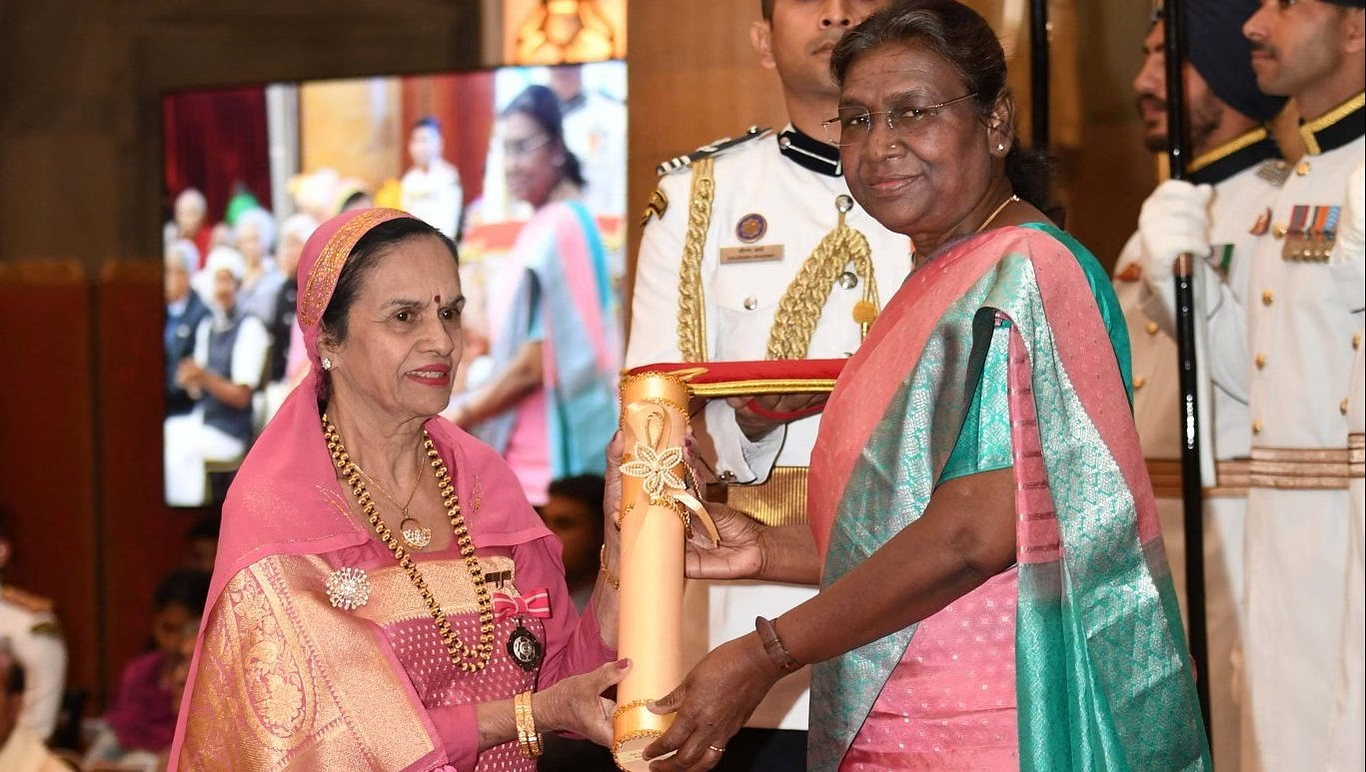
President Droupadi Murmu presents Padma Shri to Iymudiyanda Rani Machaiah for popularising the Ummathat dance art of Kodagu | Photo: @rashtrapatibhvn | X
Getting recognition as a ‘linguistic minority’ or ‘indigenous minority’ could help protect Kodavas from being marginalised and possibly reclaim land that was ‘illegally’ taken from them. This push for ST status is one step towards that goal.
“There is a constant assertion that Kodavas have lineage associated with Alexander, the Macedonian ruler. But this is to hammer the narrative to de-link Kodavas from asserting their rights to reclaim land that was forcefully taken from us,” Nachappa said.
Despite past government efforts, surveys to address the issue have failed to take off. ST status remains contentious even within the Kodava community. In 2016, the Siddaramaiah-led government halted an ethnographic and socio-economic survey of the community to assess their qualification for tribal status. This was after former MLC AK Subbaiah intervened, claiming the survey was anti-national and that Kodavas could not be compared to tribes like the Hakki Pikki.
Even now, there are tensions over whether Kodavas should be classified as a race or a tribe.
“These so-called progressive people acted as representatives of the community and said they did not want it [the ST status] since they were a prosperous people,” said a senior advocate and political leader who requested anonymity. “Most of the rich in Kodagu are big companies and people from other states who own large coffee plantations, while Kodava land holdings continue to fall sharply.”
On the other hand, a Kodagu-based author and academic argued that Kodavas “parroting” the ST demand fail to grasp its limitations.
“The very definition of Tribal is people who live in inaccessible and remote regions. We are very well educated and prosperous. By trying to get a tribal status, we are denying the same to Yeravas, Kurubas, and other communities who worked as labourers to help us get this prosperity,” the author said.
‘Carrots and sticks’
In April 2024, Guinness World Records officially recognised the 24th edition of the ‘Kodava Hockey Namme ’ as the largest field hockey tournament. This edition featured 4,834 players and 360 teams, hosted by the Kundyoloanda family as part of a month-long tournament.
This event has become central to Kodava culture, reconnecting family members scattered across Karnataka, India, and the world.
Kodava Samajas in major Karnataka cities organise cultural and sporting events, arrange marriages, provide support during funerals, and act as lobby groups to engage with the administration, keeping the community connected to its roots.
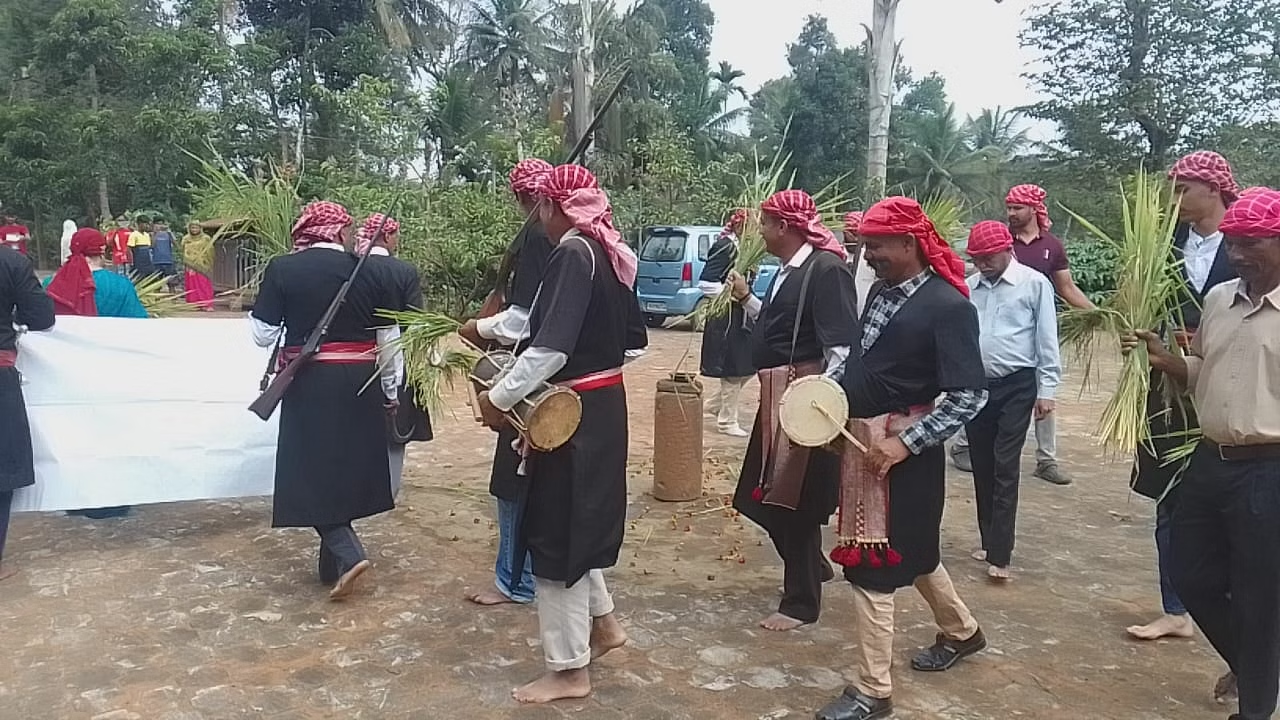
Members of the Kodava community in Karnataka | Photo: By special arrangement

Photo: By special arrangement
Other initiatives by Kodava Samajas and WhatsApp groups fuel a sense of community engagement among younger generations, who show reluctance toward having more children. In one Kodava-centric WhatsApp group, the admin recently conducted a snap poll asking, “Is pre-marriage counseling essential for Kodava Youths?” The answer was a resounding yes.
“Whether it’s marriage, naming ceremony, etc it was a collective affair. As the financial status improved, one by one [people] started building houses away from the Aiyn mane (clan house), it became a divided family and Western culture took over,” one user posted on behalf of her uncle.
She added that many were selling property to settle in Mysuru and Bengaluru, calling this shift a “man made tragedy” that was irreversible.
Such sentiments are common, with declining population narratives fuelling anxieties on various platforms.
Kabilira Harish from the T Shettigere Kodava Samaj offers a simpler explanation for the dwindling population.
“The previous generation had 8-9 children and this reduced to a maximum of three among us. Now, couples are happy with one child or don’t want to have any at all. This is a cause for alarm,” he told ThePrint.
To counter this, the T Shettigere Kodava Samaj announced incentives for Kodava couples, offering Rs 50,000 to families having a third child.
“We are not saying this money will help the family overcome any hurdles or settle the child for life…it’s only ‘Protsaha dana’ (encouragement),” said the 73-year-old.
He added that the association has sufficient funds and donors willing to support this initiative.
However, Revathi, a Kodava community member, noted that many Kodava children do not recognise their Kodava classmates at school, which adds to the widening generational gap.
While this incentive serves as the carrot, others use the stick. In 2021, Chotakmada Rajiv Bopaiah, president of the Ponnampet Kodava Samaj, banned cake cutting, champagne popping, and other ‘westernised’ practices and celebrations.
The Samaj also prohibits grooms from sporting beards and requires brides to wear their hair tied with a ‘Vastra’ during weddings.
Ironically, while Kodavas pride themselves on being polished and fluent in English, they resist ‘westernisation’.
“I don’t think this does anything except show our anxieties out in the open,” said Dechamma.
(Edited by Prashant)
source: http://www.theprint.in / The Print / Home> Ground Reports> The Fine Print / by Sharan Poovanna / December 26th, 2024

